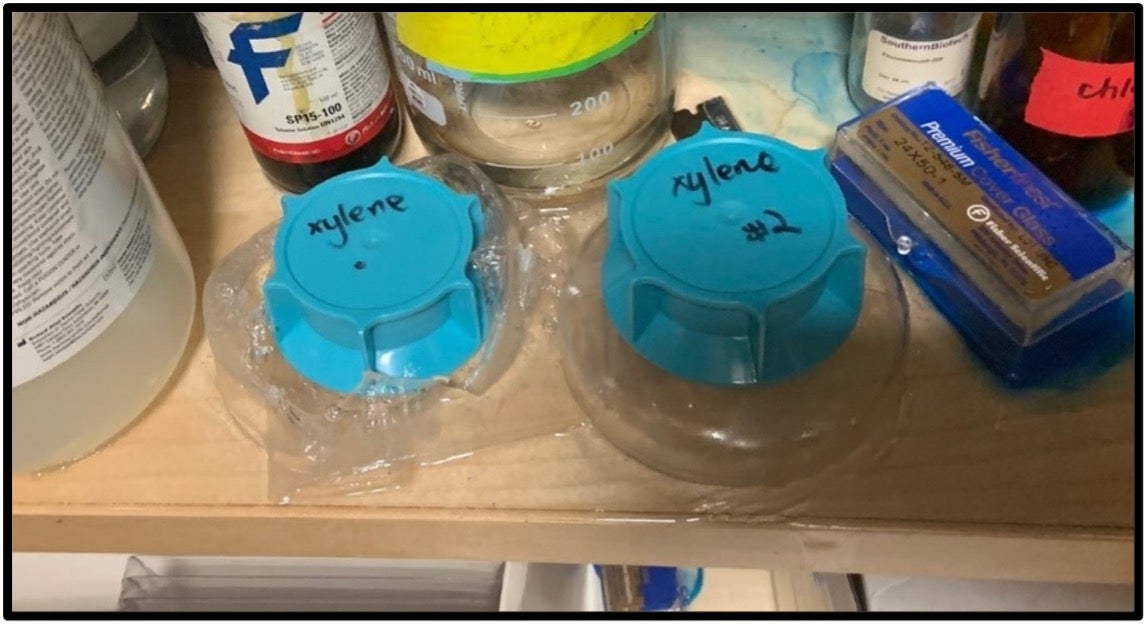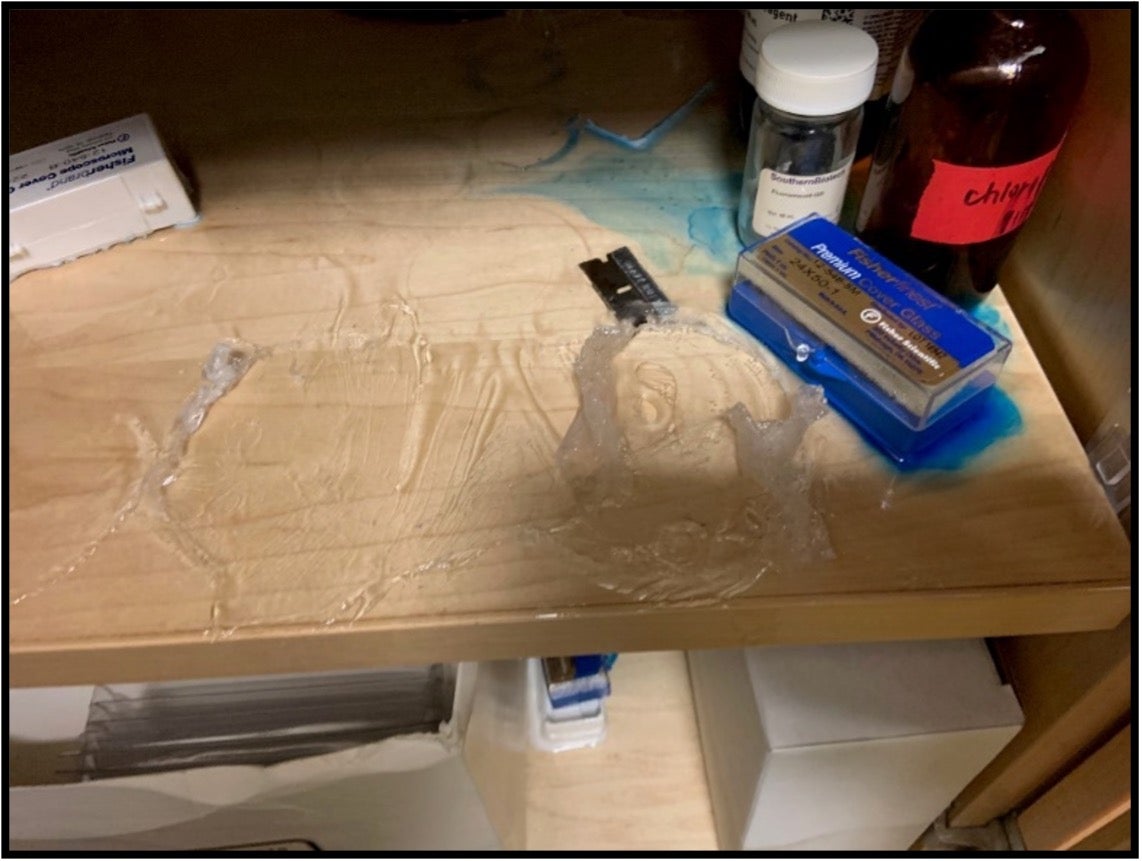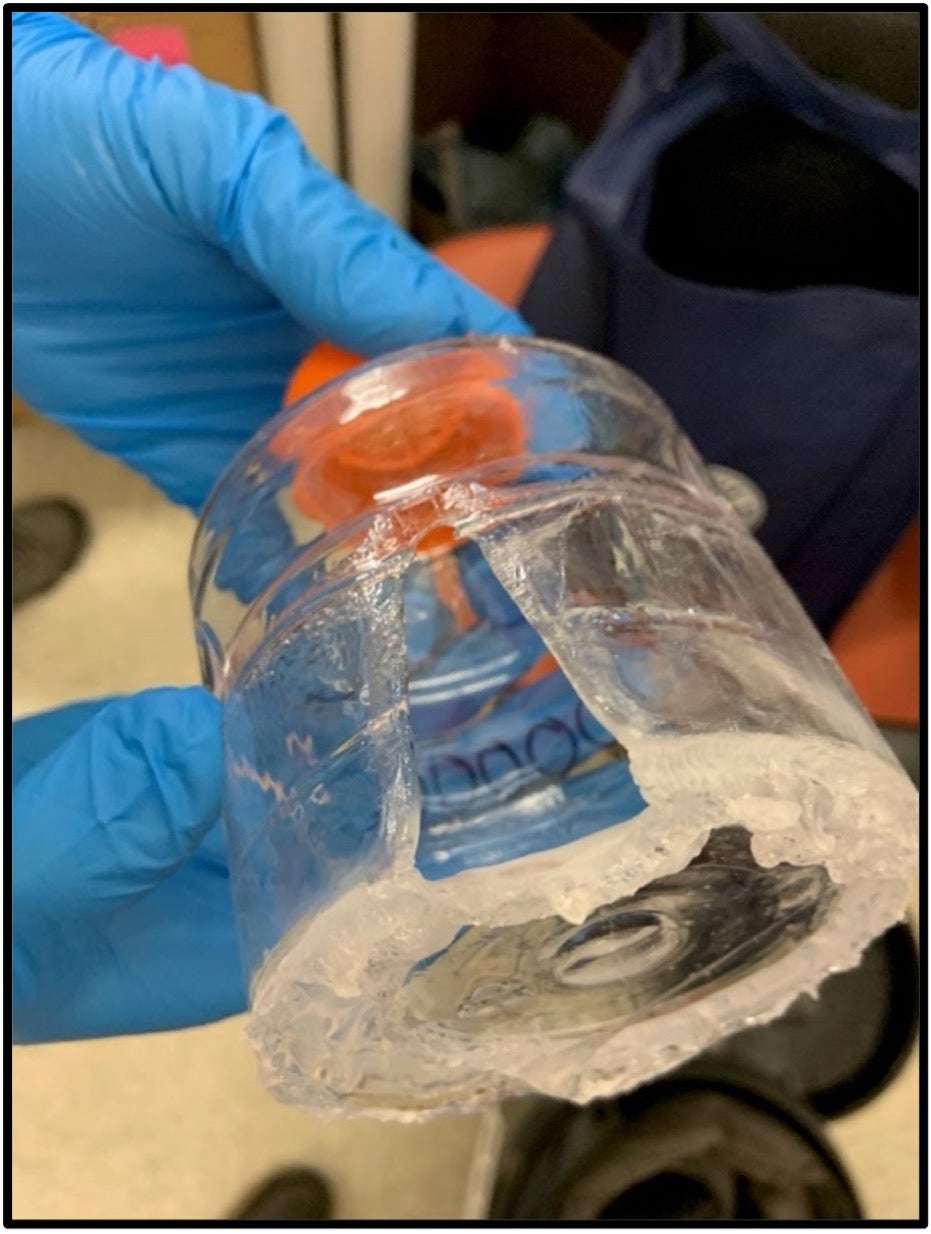Pitt EH&S has responded to a number of incidents involving the release of hazardous materials due to the use of inappropriate storage containers. This document describes each incident, identifies the cause, and offers recommended corrective actions. Plastic #6 (Polystyrene) media bottles should not be used to store laboratory solvents. These bottles will degrade and become compromised over time.
- January 2024 - Plastic 6 used for storage of acetone-based staining
Description – A container of acetone and picric acid (0.1%) staining solution became damaged and leaked.
Cause – Plastic #6 (Polystyrene) was used for the storage of an acetone-based staining solution. Plastic #6 is not recommended for acetone (see Solvent Compatibility chart below).
Recommendation/Corrective Action – PTFE (Polytetrafluoroethylene), PP (Polypropylene) or glass should be used to store acetone / acetone solutions.- February 2024 - Plastic 6 used for storage of xylene
Description – Two containers of xylene were compromised and subsequently leaked.
Cause – Plastic #6 (Polystyrene) was used for xylene storage. Plastic #6 is not recommended for xylene (see Solvent Compatibility chart below).
Recommendation/Corrective Action – PTFE plastic or glass should be used to store xylene.

- September 2024 - Plastic 6 bottle containing xylene
Description – Media bottle containing xylene was compromised, deteriorated, and subsequently leaked.
Cause – Plastic #6 (Polystyrene) was used for xylene storage. Plastic #6 is not recommended for xylene (see Solvent Compatibility chart).
Recommendation/Corrective Action – PTFE plastic or glass should be used to store xylene.